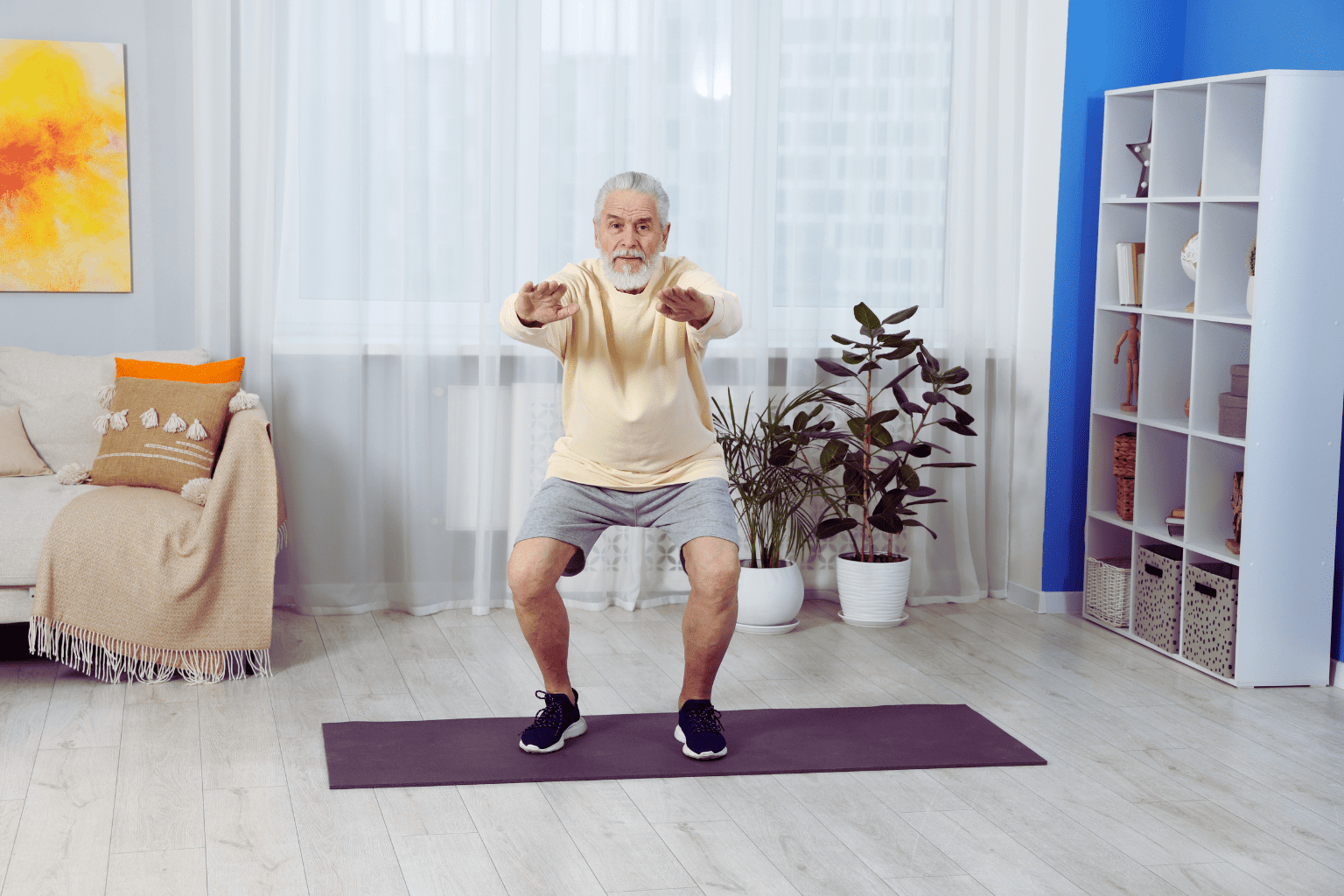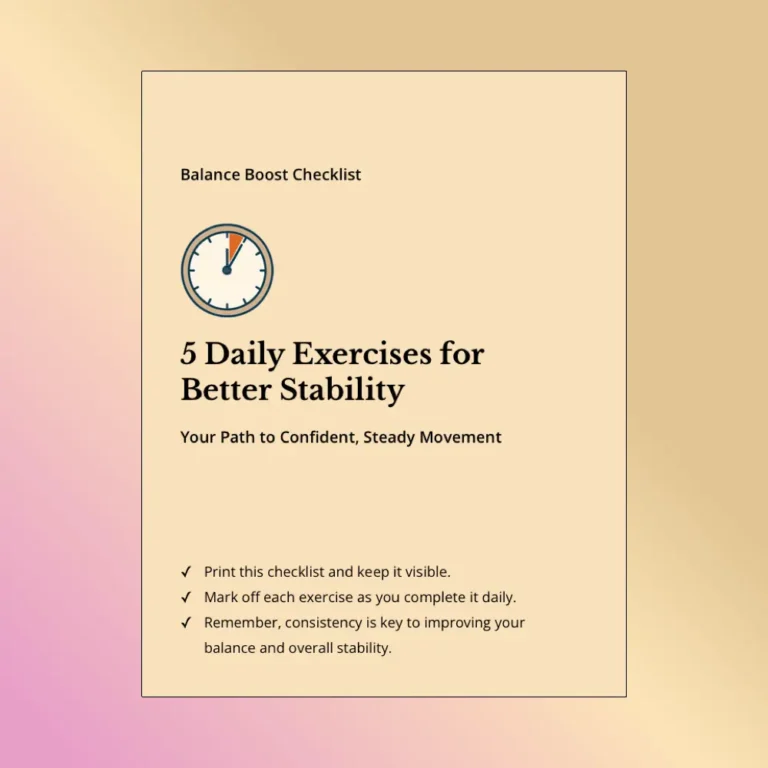
Highlights

Yoga isn’t just another exercise trend; it’s a complete approach to wellness that can be particularly helpful for older adults dealing with arthritis. By practicing gentle, modified poses, seniors can experience less pain, better flexibility, and an improved quality of life. Let’s look at how yoga can help those over 55 manage their arthritis symptoms more effectively.
Arthritis includes more than 100 different conditions, with osteoarthritis and rheumatoid arthritis being the most common. This chronic condition causes joint pain, stiffness, and swelling, which can seriously limit mobility and make everyday activities challenging for people with arthritis.
For older adults, arthritis goes beyond just physical limitations. The ongoing discomfort can cause emotional distress, affecting mental health and overall happiness. Understanding these wide-ranging effects is the first step toward finding relief through practices like yoga for arthritis.
Yoga offers numerous physical advantages, specifically helpful for seniors with arthritis:
Yoga nurtures mental well-being beyond just physical improvements:
Not all yoga styles work equally well for seniors with arthritis. These approaches are particularly good choices:
Benefits: Stretches the spine and relieves back pain.
Instructions:
Benefits: Calms the mind and stretches the spine.
Instructions:
Benefits: Strengthens the legs and opens the hips.
Instructions:
Benefits: Gently stretches the hips, thighs, and back.
Instructions:
Benefits: Increases spinal flexibility and helps digestion.
Instructions:
Yoga should never cause pain. It’s important to recognize your limits and adjust poses as needed. If something hurts, back off or try a different modification. A good yoga teacher will encourage this mindful approach for arthritis patients.
Using props can make your practice more comfortable:
Your practice space should prioritize safety:
A simple daily routine might include:
Breathing plays a crucial role in yoga practice:
What are the best yoga styles for arthritis? Chair yoga, restorative yoga, and gentle hatha yoga are highly recommended because they focus on accessibility and comfort. These styles move slowly and can be easily modified to accommodate joint limitations for individuals with arthritis.
What props are best for joint protection? Yoga blocks, straps, and bolsters are excellent choices for providing support and enhancing comfort during practice. Blocks can bring the floor closer to you, straps can extend your reach, and bolsters can support your body in restorative poses, reducing stress on your joints.
How often should seniors practice yoga? A daily practice of 15-30 minutes can bring significant benefits, but consistency is what matters most. Even practicing just 10 minutes daily is better than an hour once a week. Listen to your body and adjust your schedule as needed based on your level of experience and physical condition.
Is it normal to feel some discomfort when stretching? Mild discomfort during stretching exercises is normal, but sharp or intense pain is not. You should feel a gentle stretch, not pain. If you experience pain, back off from the pose immediately and try a modified version that’s gentle on the joints.
Can I practice yoga if I use a walker or wheelchair? Absolutely! Chair yoga is specifically designed for those with mobility challenges. Many poses can be adapted to perform while seated or with the support of a walker. The key is finding a qualified yoga instructor who understands how to modify poses appropriately for people living with arthritis.
Many seniors have found yoga to be life-changing for managing their arthritis. Martha, a 67-year-old with arthritis in her knees and hands, shares that after joining a gentle yoga class twice weekly, she regained mobility she thought was lost forever. “I can now reach items from the top shelf and walk up stairs with much less pain,” she says.
John, 72, started chair yoga after his rheumatoid arthritis made it difficult to get up from the floor. “I was skeptical at first, but after three months, I’ve noticed I can garden for longer periods without my hands cramping up,” he explains.
These stories highlight how yoga can serve as a powerful tool for managing symptoms of arthritis and improving the quality of life for seniors with arthritis.
When beginning yoga with arthritis, finding an instructor who understands the condition is crucial. Look for teachers with specialized training in working with older adults or those with medical conditions. Many community centers, senior centers, and YMCAs offer yoga class options specifically designed for arthritis patients.
If attending a class isn’t possible right away, you can begin at home with simple poses. Start with just 5-10 minutes daily of gentle yoga. As you become more comfortable, gradually increase your practice time. Using a chair to help maintain balance can be beneficial for those suffering from arthritis.
The benefits of yoga come from regular practice. Even on days when your arthritis is flaring up, gentle movement can help. Modify your practice to match how you’re feeling that day, but try yoga as a gentle way to maintain physical fitness.
There are many resources available to help seniors start and maintain a yoga practice. Books specifically written for seniors with arthritis can provide detailed instructions for modifying poses. Online videos can demonstrate proper form and technique.
The Arthritis Society Canada offers excellent resources for beginners interested in chair yoga for arthritis management.
For more information about managing pain as you age, check out this article on chronic pain management strategies for elderly individuals.
Those interested in learning more about chair yoga specifically designed for seniors will find valuable information in this comprehensive guide.
Research published in medical journals has demonstrated the positive effect of yoga on arthritis symptoms, particularly for those with knee osteoarthritis.
Additionally, breathing exercises can complement your yoga practice and help enhance the stress reduction benefits.
Yoga offers a wonderful option for seniors dealing with arthritis. Through gentle, modified poses, older adults can experience relief from joint pain, improved mobility, and better emotional well-being. By creating a consistent practice, you can embrace a new chapter filled with movement and joy.
Remember that yoga is a personal journey; there’s no competition or perfect pose to achieve. The goal is simply to move your body in ways that feel good and bring relief. With patience and regular practice, many seniors find that yoga becomes not just a form of exercise but a valuable tool for the treatment of osteoarthritis and improving overall quality of life.
Whether you join a local class led by a certified yoga instructor or start practicing at home, your yoga journey awaits; approach it with patience, kindness toward your body, and an open mind. Yoga is a great way to maintain mobility and manage the chronic pain associated with arthritis, and poses that arthritis patients should avoid can be easily substituted with joint-friendly alternatives.
